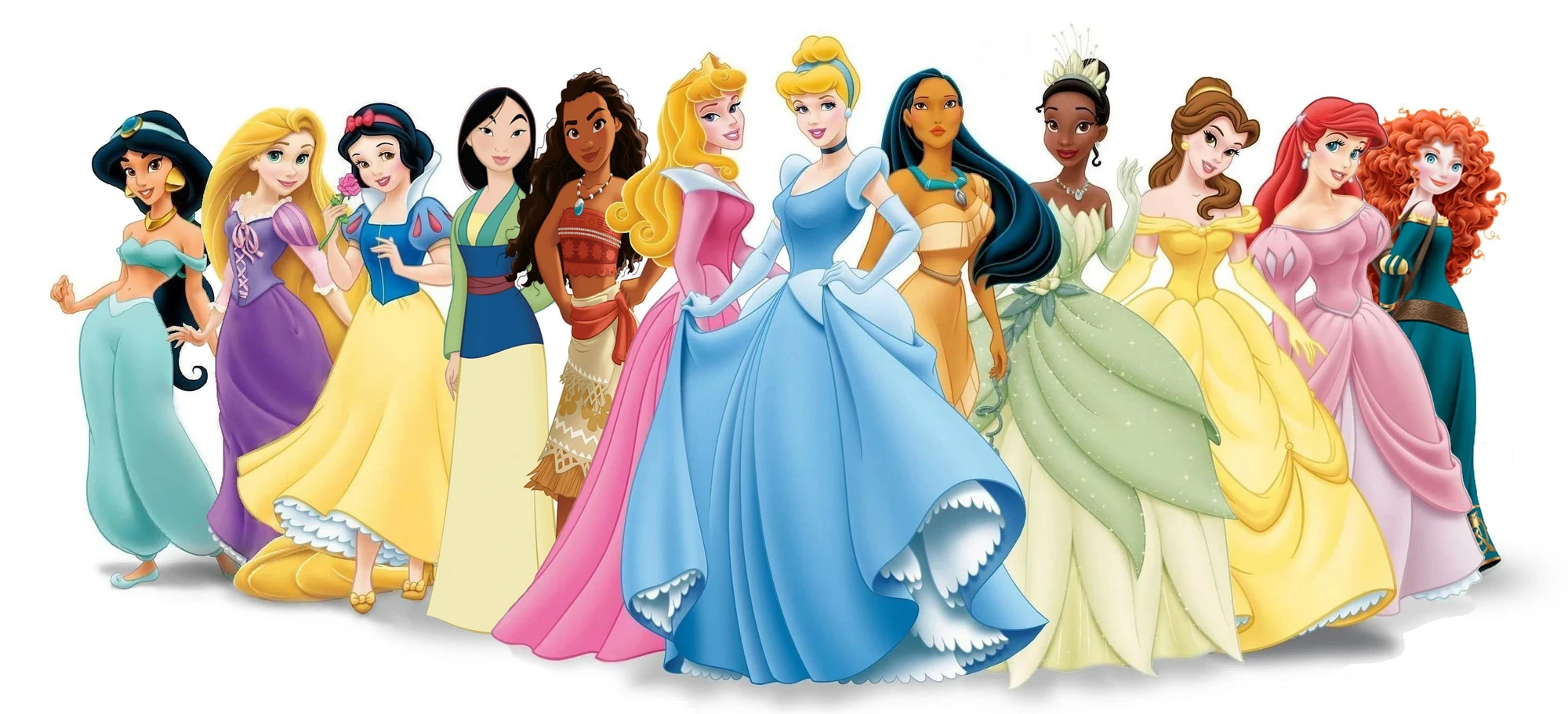I grew up in the 90s, when Disney animated films were extremely popular. The Disney
Princesses were some of my favorite characters; particularly Alice and Belle. I identified with
Alice’s quirky adventure and Belle’s obsession with books. I also loved the stories, from The
Lion King to Pocahontas. My parents still have all of the pre-2000s Disney movies on VHS. On
TV, Disney Channel, Nickelodeon, and Cartoon Network were the only channels my parents would
let me watch, because they believed the shows to be relatively wholesome and age appropriate.
let me watch, because they believed the shows to be relatively wholesome and age appropriate.

Most of my childhood pop culture interests were based around what are now considered
classic children’s movies and shows. I know for a fact that I never considered any Disney movies
with a critical lens prior to college. To me, they were just for entertainment. Although I read a lot
of literature that provided ample social commentary, I never considered the deeper implications of
the films I enjoyed. Linda Christiansen describes how young people often internalize the
messages put forth by popular media without considering the issues embedded deep within
them. She writes, “the messages, or ‘secret education’ linked with the security of their homes,
underscore the power these texts deliver,” (176). Because our parents condone and even
encourage our viewing of such material, we never question that it’s good and true. Frozen is a
somewhat complicated movie compared to other princess films. In many Disney movies, the
princess wants to find her prince, or has to struggle with something that stifles her, whether it’s a
strict family or societal expectations. Frozen has two princesses who are involved in these tropes.
I’ll be honest; when watching Frozen, I much preferred Anna. Elsa’s role is somewhat
stereotypical. She’s a woman with power, who must stifle her emotions in order to be a good ruler.
It’s a commentary about women being required to hide who they really are before they can have
a positive impact on the world. Elsa is absent in her ice castle for much of the movie, while Anna
must employ bravery and quick-thinking to solve her sister’s problem. Eventually Elsa learns to
control her magic and shake off what people have said about her, but again, I feel like there’s an
implication that if she loses it and hurts someone again, she’s to blame for not keeping herself
together. I find Anna’s storyline to be more freeing from the expectations of what it means to be
a princess. Because she’s second in line, the expectations for her are different, and thus she can
be a bit more adventurous and can buck tradition for more autonomy.
One thing that Frozen has that many other Disney Princess movies don’t is that it challenges the
idea that a princess’s only goal should be to find a prince. Multiple characters say how ridiculous
it is to marry someone you just met that day, and Anna comes to realize it herself when Hans
does his evil 360. Love is important in this story, but it’s not all about romance; it’s also about
sisterhood. The movie gives some strength to female characters and lets them save each other.
Still, both princesses are white, blue-eyed, and conventionally attractive with “their beauty and
their fashionable attire” (182) that are so common in fairytale women. Anna is a bit of a mess,
and Elsa has dangerous powers, but they still clean up well. So, although the movie definitely
makes some strides on the feminist front, I don’t think it’s as revolutionary as many would argue.
This article highlights some of the ways that the movie falls short.
I can’t say I dislike Frozen from an entertainment standpoint, but I don’t think it’s as progressive
as it has been made out to be, and I really don’t understand the obsession with Elsa when it is
more of a story about Anna. When looked at critically, it’s not particularly feminist, and it still
maintains many of the tropes that Linda Christiansen warns against. The beautiful white
princesses still end up with everything they want and need. This film is the perfect example to
use when being critical; take it with a grain of salt.
as it has been made out to be, and I really don’t understand the obsession with Elsa when it is
more of a story about Anna. When looked at critically, it’s not particularly feminist, and it still
maintains many of the tropes that Linda Christiansen warns against. The beautiful white
princesses still end up with everything they want and need. This film is the perfect example to
use when being critical; take it with a grain of salt.
References:
Marshall, Elizabeth, and Sensoy Özlem. Rethinking Popular Culture and Media. Rethinking Schools, 2016.
Good Evening Ally! Thank you so much for allowing me to read your blog post :)
ReplyDeleteMy mom was just like your parents. She always put on Disney, Cartoon Network, or Nickelodeon on TV for me. I remember going to costco and asking my mom to buy all of the Disney movies on VHS for me. I never knew better than to buy into them. I guess it was because I believed "if it's good enough for my mom to let me watch it, I'll watch it too."
I really loved your point about princesses having a greater objective than just finding her prince. This was something I did not consider prior to reading your post.
My family also encouraged us to watch Disney films. To be honest, how many of us have been geared to think of media in such a specific way? Not one person, that I can remember, has ever brought up the discussions we are having in class.
ReplyDeleteParents more likely thinking let me find something entertaining for mu child not realizing the hidden message being portrayed in these animated films.
ReplyDelete